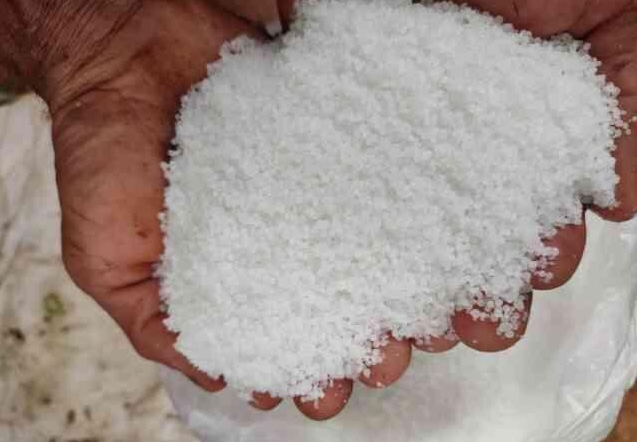
Sake brewing starting from raw rice The beginning of sake brewing is to determine the rice that is the main ingredient of sake brewing, and about 98% of the raw rice is from Yamagata Prefecture. Yamagata Prefecture's main rice is Dewa Sansan, Miyama Nishiki, Dewa no Sato, Yuki Megami, and other edible rice such as Haenukiya and Tsuyahime. This makes it possible to brew sake that feels the climate of Yamagata. In addition, we use Yamada Nishiki rice from outside the prefecture to brew sake.
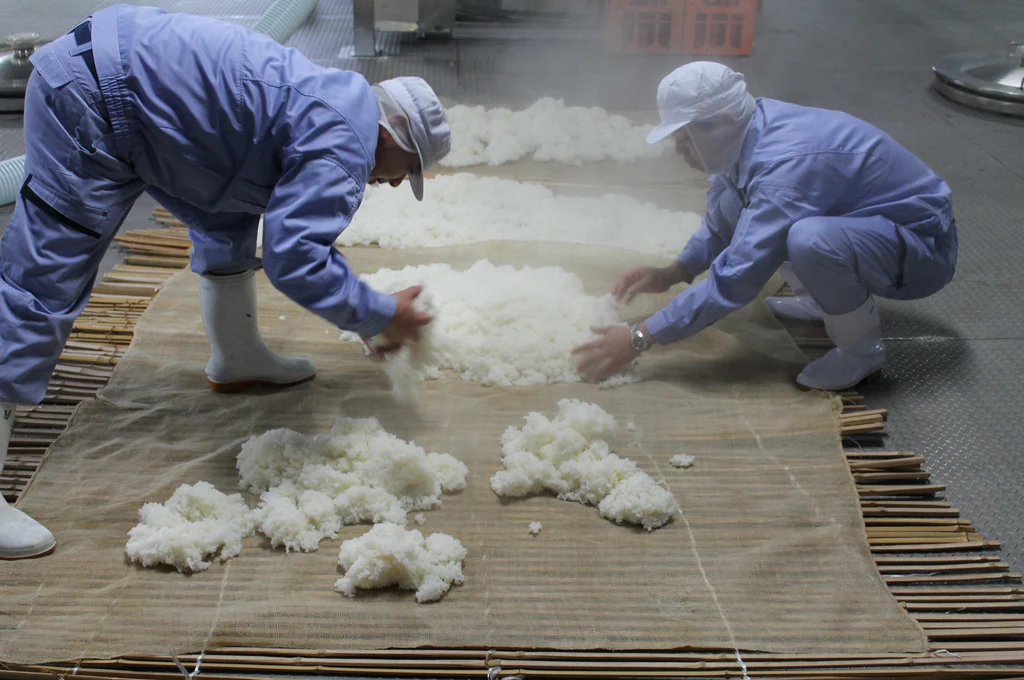
The purchased rice is first sorted, foreign substances are removed, and it is put into the brown rice tank. (Some of the rice is covered with bags.) After the drying period, the rice is polished according to its purpose. One rice milling machine with 30 bales and one with 15 bales are in operation. It takes a little less than 20 hours with white rice for sake, 30 to 45 hours at 60% polishing, and 72 to 90 hours at 40% polishing without stopping the rice polishing machine even once. At this time, our brewery uses flat rice polishing. This is a method of uniformly polishing rice, which is usually made into beads, into the shape of brown rice. By this method, it is possible to reduce excessive ingredients that are considered to be obstacles in sake brewing.
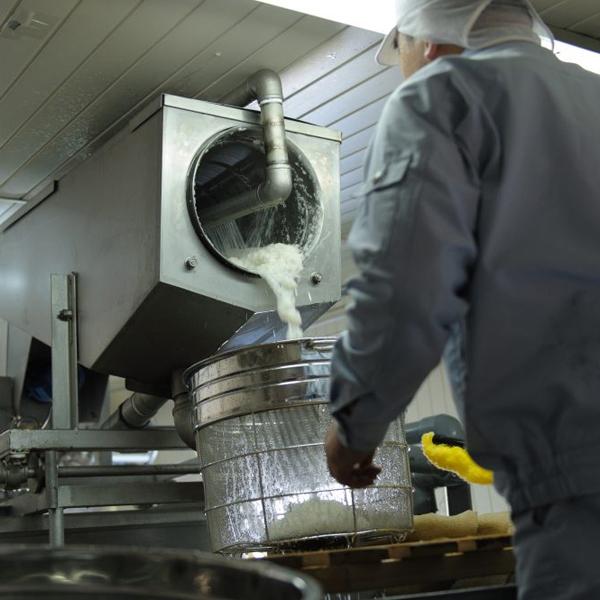

80% of sake is determined by koji It is no exaggeration to say that 80% of sake brewing is determined by koji. Koji affects most of the aroma, sweetness, sourness, bitterness, astringency, spiciness, swelling and sharpness of the taste of sake. Koji helps the yeast starter, transforming starch into glucose. Our brewery has a koji making machine called KOS. Place it in a closed space of about 30 degrees at all times to make koji. In this room, it is possible to reproduce futa-koji, which is said to be the best for ginjo-koji. The structure is divided into upper and lower parts. Shengtana is a structure that contains four large koji lids. Aspergillus oryzae is applied to the steamed rice and the temperature is lowered to 30 degrees. Make it a constant thickness of about 25 cm and wait for the growth of bacteria for 24 hours. The next day, judging from the aroma, texture, etc., the thickness of the filling is decided and transferred to the serving shelf. After about 7 hours have passed, the racks are changed one by one to further homogenize the koji. At our brewery, this is what we refer to as “intermediate work.” After a few hours, the maximum temperature is reached and the koji is grown until the next morning at about 42 degrees Celsius, where it is rapidly cooled and ready for koji production. It takes about 45 hours to make koji. This is the birth of plump koji with a sticky seam. The aroma of chestnuts wafts in the room, and the malted rice has a slightly sweet taste.
Ryoshu is a phrase that says, "Sake brewing is created by the harmony of the brewers." Rokkasen adds harmony with microorganisms to it. Sake is made by microorganisms, and human beings are based on how we can create an environment for microorganisms and understand them. can you give love Rokkasen believes that this is the basis of handcrafting. In all cases, we do not work with numerical values such as time and temperature, but work using the five human senses. Modern equipment is just a part of the tools and hands and feet, and we will continue to stick to high quality, keeping in mind that we cannot brew sake without sensitivity. This is because Rokkasen's sake is a fusion of modern equipment, human wisdom, and microorganisms with nature.
Wajo Ryoshu is a phrase that says, "Sake brewing is created by the harmony of the brewers." Rokkasen adds harmony with microorganisms to it. Sake is made by microorganisms, and human beings are based on how we can create an environment for microorganisms and understand them. can you give love Rokkasen believes that this is the basis of handcrafting. In all cases, we do not work with numerical values such as time and temperature, but work using the five human senses. Modern equipment is just a part of the tools and hands and feet, and we will continue to stick to high quality, keeping in mind that we cannot brew sake without sensitivity. This is because Rokkasen's sake is a fusion of modern equipment, human wisdom, and microorganisms with nature.
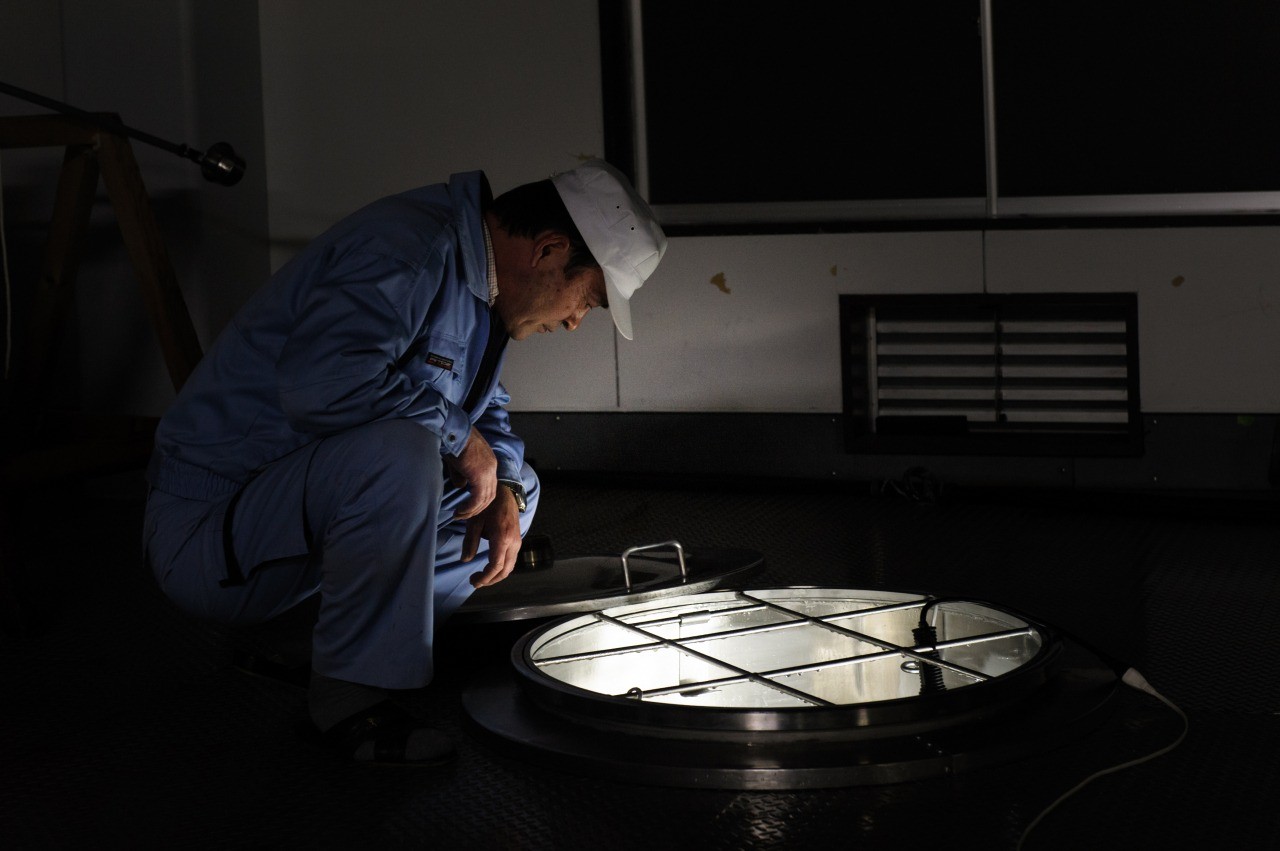
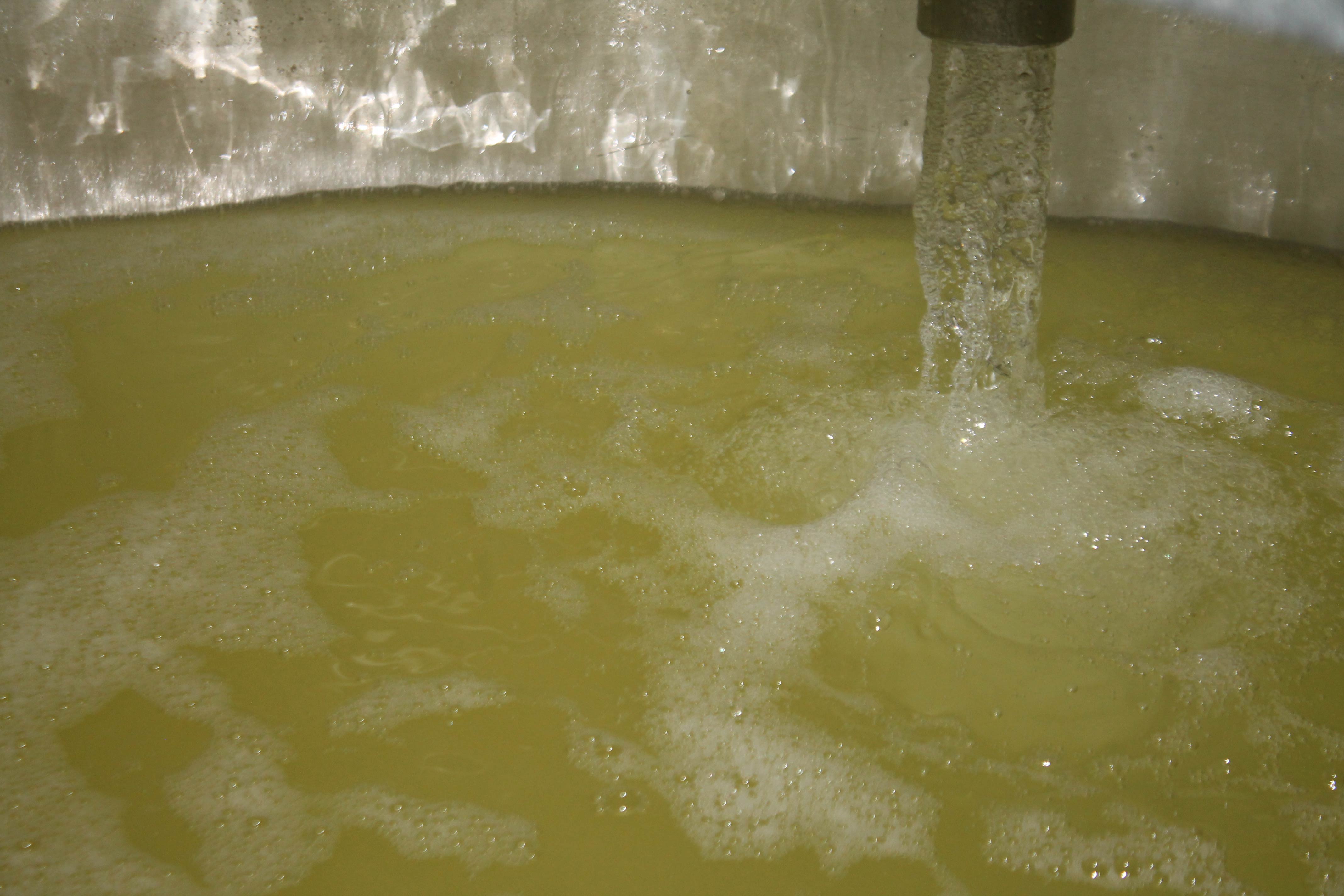
Freshly squeezed is also delicious. Rokkasen is performed in two ways: the Yabuta method (pressing machine) and the bag removing method. Refined sake is born for the first time by squeezing. And lees are produced as a by-product. The lees are separated into board lees and Neri lees in the summer, shipped and aged. Our brewery is doing sake brewing that produces sake lees. This will give you a nice clean finish. In addition, since we always wash thoroughly, you can enjoy the taste as it is, such as unfiltered raw. For cleaning purposes, the height of Yabuta is raised to a level where a person can stand underneath it. One of the factors that allows us to ship fresh sake is the thoroughness of washing down to the bottom.
Rokkasen is a sake that was born with the desire to deliver a gentle taste to people's hearts, like the Heian poets "Rokkajin" who composed waka that gently resounded in people's hearts. In 1972, five sake breweries in the Kitamurayama area (Higashine City, Murayama City, Obanazawa City, and Oishida Town) were brought together and founded. Thanks to you, we will reach the 52nd term in October this year. I would like to express my heartfelt gratitude to all the people in the region who have supported us, the people involved in distribution, and the fans of Rokkasen.
Sake contests by international organizations such as the IWC (International Wine Challenge) and the Joy of Sake (All-American Sake Appraisal) have become popular, and sake is also attracting attention from around the world, and is playing an active role in the scene where it is more enjoyable and appreciated. I feel. Of course, even in Japan, the way of drinking has changed, and the number of ways to enjoy drinking while understanding the compatibility with meals has increased. At Rokkasen, we have positioned the sparkling salmon “Hitotoki” as a new entrance to sake, and are working on sake brewing to convey the appeal of sake to a wider range of customers than ever before. We will continue to brew sake that will be enjoyed and appreciated by playing a role in spreading Japanese culture to the world. Rokkasen, which is called a department store of sake, will continue to pursue the possibilities of sake, and will continue to devote ourselves every day by fusing nature with the wisdom and skills of our brewers.
Shigekazu Matsuoka Representative Director Rokkasen Co., Ltd.
| Year and Month | Content |
|---|---|
|
October 1972 (Showa 47) |
Established as Yamagata Meijo Co., Ltd. Established as a joint bottling factory and sales base for five sake breweries in the Kitamurayama area. Scene 5 is as follows.
Birth of “Michinoku Rokkasen” Kohei Takamiya appointed as Representative Director |
|
April 1983 (Showa 58) |
Chisaburo Yokoo appointed as representative director |
|
October 1985 (Showa 60) |
The brewing divisions of the constituent breweries were closed down and consolidated, and the Rokkasen Sake Brewery Cooperative Association was established |
|
March 1992 (1992) |
Company name changed to Rokkasen Co., Ltd. |
|
November 1997 (Heisei 9) |
Shigeaki Matsuoka appointed as Representative Director |
|
July 2003 (Heisei 15) |
Acquisition of liqueur license |
|
November 2011 (2011) |
Shigekazu Matsuoka appointed as representative director |
|
December 2020 (2nd year of Reiwa) |
Changed the organization to Rokkasen Sake Brewery Co., Ltd. (Former organization: Rokkasen Sake Brewery Cooperative Association) Shigeaki Matsuoka appointed as Representative Director |
|
April 2021 (Reiwa 3rd year) |
Business integration of Rokkasen Co., Ltd. and Rokkasen Sake Brewery Co., Ltd. (2021) Rokkasen Co., Ltd. continues business (acquisition of various liquor production licenses) Shigekazu Matsuoka appointed as representative director |

The Zenkoku Shinshu Kanpyokai is a national scale appraisal of new sake that started in 1911 (Meiji 44) and continues today. Co-sponsored by the National Research Institute of Brewing and the Japan Sake Makers Association. Appraisal of new ginjo sake of the year
| Year | Product Name | Award |
|---|---|---|
| 2002 brewing year | Time-consuming Daiginjo | gold medal |
| 2003 brewing year | Time-consuming Daiginjo | winning a prize |
| 2004 brewing year | Time-consuming Daiginjo | winning a prize |
| 2009 brewing year | Time-consuming Daiginjo | winning a prize |
| 2011 brewing year | Time-consuming Daiginjo | winning a prize |
| 2013 brewing year | Time-consuming Daiginjo | gold medal |
| 2014 brewing year | Time-consuming Daiginjo | winning a prize |
| 2015 brewing year | Time-consuming Daiginjo | gold medal |
| 2016 brewing year | Time-consuming Daiginjo | winning a prize |
| 2017 brewing year | Time-consuming Daiginjo | winning a prize |
| 2018 brewing year | Time-consuming Daiginjo | winning a prize |
| Reiwa 2 brewing year | Time-consuming Daiginjo | winning a prize |